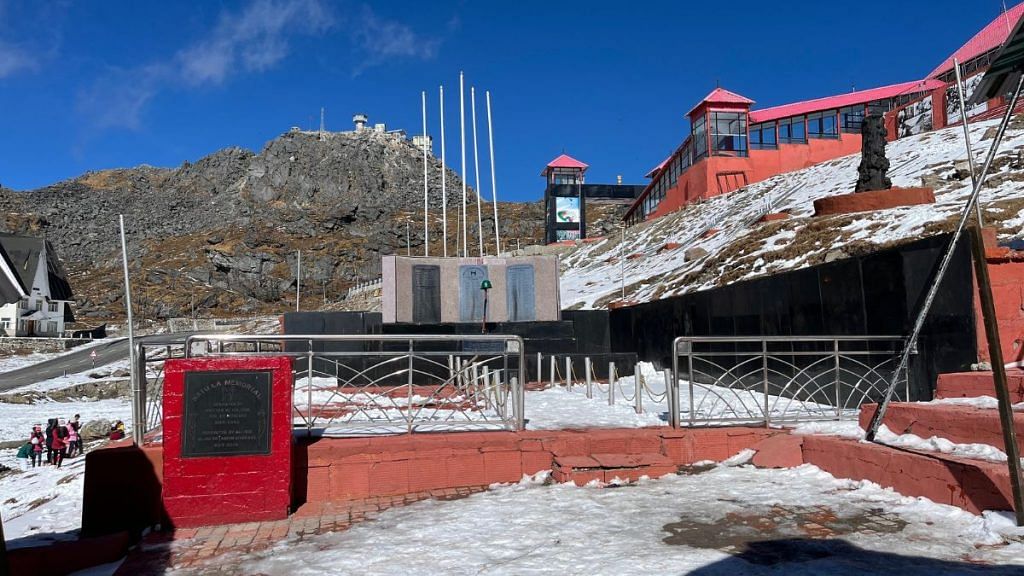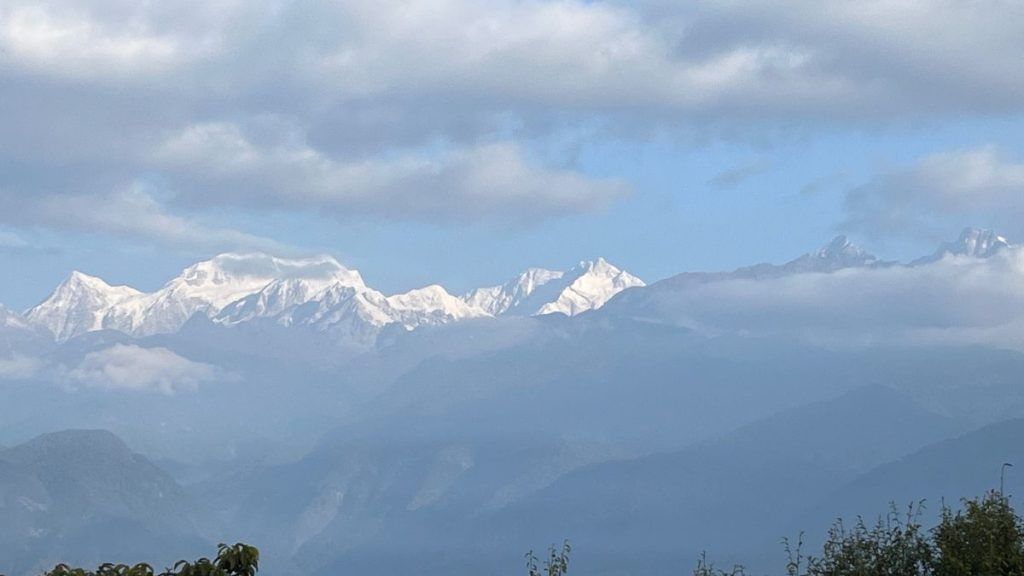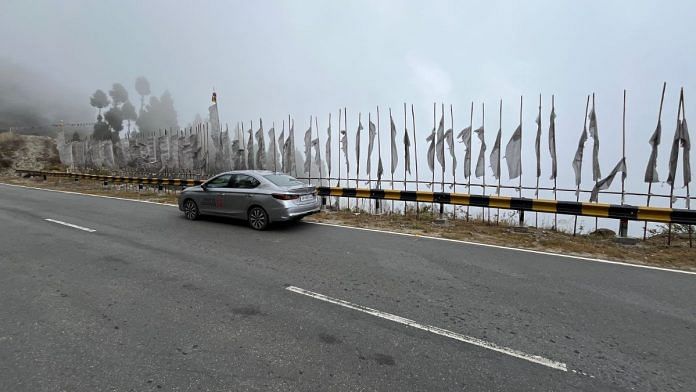I received an invitation from Honda Car India to participate in their latest edition of the ‘Drive To Discover’ event. I drove through Sikkim in early December. The journey to Gangtok started from the twin-cities of Bagdogra and Siliguri, located in the northern part of West Bengal. These cities, serving as essential hubs for North Bengal, its tea estates, as well as Sikkim and neighbouring Bhutan, were bustling with activity, typical of rapidly growing urban areas in India. So, navigating through them was not easy.
Over the course of this event, I drove the entire range of Honda cars in India, including the Amaze and City sedans and the carmaker’s latest ‘Elevate’ SUV, all equipped with Honda’s ‘Continuously Variable Transmission’ (CVT), a type of automatic transmission. The road out of Siliguri towards Sikkim was still reeling from the aftermath of the Teesta floods two months ago in October. Parts of the national highway had been washed away and the traffic still involved workers undertaking emergency repairs.
By the time we crossed the bridge into Sikkim, it was dark, which allowed me to experience one of Honda’s party tricks in their newer cars equipped with Advanced Driver Assistance Systems (ADAS): ‘adaptive headlights’. Driving on empty, winding roads, particularly in hilly areas, typically involves toggling between high-beam and low-beam lights to accommodate oncoming vehicles. But not on these cars, as the headlights adjust automatically. Additionally, the cornering lights proved invaluable on the twisting roads, illuminating the path as I navigated through turns.
Also read: Bengaluru to Kochi via Kodagu & Wayanad—driving to discover coffee, clove & Rahul Gandhi country
Driving through Sikkim
In Gangtok, our hotel was at one end of the city but the drive to Nathu La the next morning meant we had to cross through the capital. Steep inclines and declines throughout made one appreciate how locals managed before the internal combustion engine. But it is in such areas where you really get to appreciate the transformative nature of the motor vehicle, which made the 60-odd kilometre drive from the city to India’s border post with China at Nathu La possible.
While the roads to the border are excellently maintained by the Border Roads Organisation, the climb from the 6,000 feet altitude of Gangtok to the 14,000 feet of Nathu La was incredibly smooth, thanks to modern petrol injection engines. The drive is made all the more scenic by the thousands of multi-coloured Buddhist prayer flags and Tsangpo Lake.

Nathu La is a strange border—there are thousands of tourists from India, mainly from Bengal, and a desolate Chinese side, but only a couple of border guards. The Maratha regiment jawans on the Indian side were having a tough time trying to herd tourists into the designated paths, which were a bit slippery due to recent snowfall. Matters were made slightly worse thanks to the thin air, and there were a couple of tourists who had to be rushed out. The defunct border crossing, once suggested for trade between the two nations before Covid and the skirmishes in Eastern Ladakh, also bears the scars of conflict from 1962 and stands as a reminder of what could have been.

The next day, it was time to drive from eastern Sikkim to Western Sikkim, specifically the town of Pelling. This meant a haul back to the Bengal border and across the Teesta again. Pelling is a small hill station town but when the sky is clear, particularly in the morning, it offers a stunning view of Kanchenjunga, the world’s third highest mountain and the highest point in India. The drive to Pelling through narrow roads with sharp turns and severe inclines could best be described as challenging and a proper upper body workout thanks to the constant steering.

We stayed the night at the magnificent Elgin hotel, which has an old world charm to it that most old properties across the country have lost today. Still, there was apparently a better view to be had, at the Pelling Skywalk, a glass bottomed walkway perched almost at the highest point of the town. The actual highest point at the same spot is adorned by a massive statue of a seated Buddha. The mountain soon went into hiding behind clouds and after a walk up and down from the Buddha statue, it was time to drive back towards Bengal, but this time to a tea estate in Darjeeling.
Also read: Honda Elevate is a latecomer but that doesn’t mean it can’t beat the Cretas and Taiguns
On to Darjeeling
The drive from Jorethang on the Sikkim border to Darjeeling was among the most challenging, and it helped that I was driving a manual. Steep inclines and sharp turns meant that one had to really play with the gears, yet when driving between tea gardens with their stunning aroma, you did forget about the strenuous effort. Although, Google Maps, again, got us lost and took us through a narrow, unpaved road that gave the Elevate suspension a thorough workout. In fact, despite the challenging driving conditions, the Honda vehicles, which are much more ‘urban’ vehicles than hill machines (the car is called the ‘City’ after all), held up remarkably well. Every single vehicle in the convoy navigated the course with only the occasional dent and scratch.
Driving through Darjeeling, on the other hand, is an example of unplanned development in a hill station, and fair to say this was as bad as Shimla and Nainital, although things have improved slightly in the latter. Traffic was bad, and while it was a sight to see the old toy train pull into Darjeeling station, dealing with manic taxi drivers determined to take a foot if you yielded an inch, made the drive strenuous.
Driving through the narrow road from Darjeeling to Kalimpong was quite fun—after all, it was downhill for the large part. It was another reminder that driving on Indian hills, particularly after dark, is not for the faint hearted. I am glad to have learnt the skill from my folks, but it is always best to have multiple drivers in a car and control your driving because you never know what could be coming around the corner and there are hundreds of corners. Driving on the poker straight expressways of the plains has spoiled many of us.
The next morning, it was time to rush back to Siliguri via roads that cut through the Teesta Valley with the damage from rock falls after the recent floods still evident. Overall, the ‘Drive to Discover’ was a ‘Drive To Remember’. After all, nothing beats driving to new and interesting parts of your own country.
@kushanmitra is an automotive journalist based in New Delhi. Views are personal.
(Edited by Prashant)



